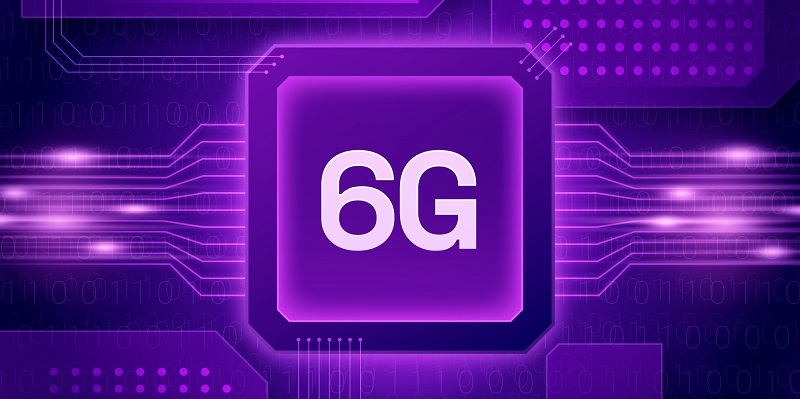The evolution of mobile networks has been a catalyst for transformative advancements in communication technology. With each new generation, we witness the introduction of novel features and capabilities, driven by a new spectrum of radio waves. As we look to the future, the next generation, known as 6G, promises to revolutionize our connectivity even further, offering unprecedented speed, reliability, and integration across various communication platforms. In this article, we delve into the key features of 6G, its implications, and the potential security solutions it may employ.
The mid-band spectrum range of 6G
Building upon the capabilities of its predecessors, 6G will introduce a range of radio waves spanning from 7 to 20 gigahertz. This mid-band spectrum will enable faster data transmission rates, providing users with lightning-fast connectivity and superior browsing experiences.
Reduced latency in 6G networks
Latency, the time it takes for a signal to complete a round trip, is poised to plummet in 6G networks. With response times in the range of microseconds, the delay between sending and receiving data will be virtually imperceptible. This low latency opens doors to real-time applications and immersive technologies that require instant responsiveness, enhancing user experiences across various domains.
Enhanced reliability and seamless real-time application functionality
Imagine a world where dropped calls, lagging video conferences, and patchy network coverage are a thing of the past. With 6G, the reliability and overall functionality of real-time applications will become seamless. From telemedicine to autonomous vehicles, 6G networks will provide the robust infrastructure necessary to support critical services, ensuring uninterrupted communication at all times.
Streamlined machine-to-machine communication
The Internet of Things (IoT) has already begun to revolutionize the way we interact with our surroundings. With 6G, machine-to-machine communication is anticipated to streamline significantly. The combination of faster data transfer rates, reduced latency, and enhanced reliability will empower a network of interconnected devices, facilitating efficient data exchange and enabling a new era of innovation.
Integration of aerial, ground, sea, and space communications
6G wireless networks will go beyond terrestrial boundaries. This groundbreaking technology will merge aerial, ground, sea, and even space communications onto one unified platform, expanding the possibilities for seamless global connectivity. From autonomous drones to maritime vessels and satellite systems, 6G will establish a truly interconnected world, crossing traditional boundaries and enabling unprecedented collaboration.
Interaction with devices on low and high data rates
Operating on a new radio spectrum enables users to interact with devices that have low data rates, such as biosensors and IoT devices, as well as those on the high end, such as high-definition video streaming and augmented reality applications. This versatility will revolutionize our daily lives and further integrate technology into every aspect of our existence.
Infrastructure deployment challenges and costs
To get 6G up and running, a new infrastructure will need to be deployed at scale, and that’s expensive. Building the necessary infrastructure for 6G networks will require a substantial investment, including laying down new communication towers, upgrading existing infrastructure, and expanding coverage to rural and remote areas. However, the long-term benefits, such as improved connectivity, economic growth, and technological advancements, make it a worthwhile undertaking.
Increased attack surface and security challenges
With the advent of the Internet of Things, virtualized networks, and open-source technology, the attack surface of 6G networks is likely to increase. The larger the attack surface, the more vulnerable a network becomes to potential cyber threats. As we move forward, the focus on security in 6G networks will be paramount. Safeguarding data privacy, protecting critical infrastructure, and securing network connections will require innovative solutions and robust security measures.
Predictive capabilities of AI and machine learning
Harnessing the power of artificial intelligence (AI) and machine learning (ML) for proactive threat detection and response will help strengthen 6G networks against emerging cyber threats. AI algorithms can analyse network traffic patterns, detect anomalies, and promptly mitigate potential risks.
Blockchain technology
The decentralized nature of blockchain technology offers inherent security benefits. By employing blockchain for network authentication, data integrity, and secure transactions, 6G networks can enhance trust and protect against malicious attacks.
Quantum encryption
With the rise of quantum computing, traditional encryption methods become vulnerable. Integrating quantum encryption techniques into 6G networks can provide unprecedented levels of security, protecting data against quantum-based attacks.
The advent of 6G networks promises to revolutionize communication technology as we know it. With features like the mid-band spectrum range, reduced latency, enhanced reliability, streamlined machine-to-machine communication, and integration across various communication platforms, the possibilities for connectivity and innovation seem boundless. However, with these advancements come challenges such as infrastructure deployment costs and increased security threats. By employing robust security solutions like fortified hardware, AI and ML capabilities, blockchain technology, and quantum encryption, we can pave the way for a secure and connected future. As we embark on the journey toward 6G, we eagerly anticipate the endless possibilities it holds for transforming the way we connect and communicate.

